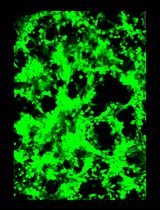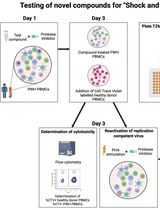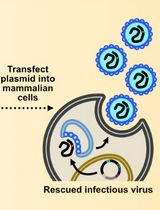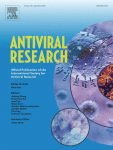- Submit a Protocol
- Receive Our Alerts
- Log in
- /
- Sign up
- My Bio Page
- Edit My Profile
- Change Password
- Log Out
- EN
- EN - English
- CN - 中文
- Protocols
- Articles and Issues
- For Authors
- About
- Become a Reviewer
- EN - English
- CN - 中文
- Home
- Protocols
- Articles and Issues
- For Authors
- About
- Become a Reviewer
A Sensitive and Specific PCR-based Assay to Quantify Hepatitis B Virus Covalently Closed Circular (ccc) DNA while Preserving Cellular DNA
Published: Vol 11, Iss 8, Apr 20, 2021 DOI: 10.21769/BioProtoc.3986 Views: 6237
Reviewed by: Alessandro DidonnaVasudevan Achuthan

Protocol Collections
Comprehensive collections of detailed, peer-reviewed protocols focusing on specific topics
Related protocols

General Maintenance and Reactivation of iSLK Cell Lines
Ariana C. Calderón-Zavala [...] Ekaterina E. Heldwein
Jun 5, 2025 1820 Views

Inducible HIV-1 Reservoir Reduction Assay (HIVRRA), a Fast and Sensitive Assay to Test Cytotoxicity and Potency of Cure Strategies to Reduce the Replication-Competent HIV-1 Reservoir in Ex Vivo PBMCs
Jade Jansen [...] Neeltje A. Kootstra
Jul 20, 2025 2439 Views

Assembly and Mutagenesis of Human Coronavirus OC43 Genomes in Yeast via Transformation-Associated Recombination
Brett A. Duguay and Craig McCormick
Aug 20, 2025 2983 Views
Abstract
Hepatitis B virus (HBV) is the major cause of liver diseases and liver cancer worldwide. After infecting hepatocytes, the virus establishes a stable episome (covalently closed circular DNA, or cccDNA) that serves as the template for all viral transcripts. Specific and accurate quantification of cccDNA is difficult because infected cells contain abundant replicative intermediates of HBV DNA that share overlapping sequences but arranged in slightly different forms. HBV cccDNA can be detected by Southern blot or qPCR methods which involve enzymatic digestion. These assays are laborious, have limited sensitivity, or require degradation of cellular DNA (which precludes simple normalization). The method described in this protocol, cccDNA inversion quantitative (cinq)PCR, instead uses a series of restriction enzyme-mediated hydrolysis and ligation reactions that convert cccDNA into an inverted linear amplicon, which is not amplified or detected from other forms of HBV DNA. Importantly, cellular DNA remains quantifiable during sample preparation, allowing normalization and markedly improving precision. Further, a second linear fragment (derived from enzymatic digestion of a separate region of the HBV DNA genome and is present in all forms of HBV DNA) can be used to simultaneously quantify total HBV levels.
Graphic abstract:

Selective detection of HBV cccDNA and total HBV DNA using cinqPCR (Reproduced from Tu et al., 2020a).
Background
Hepatitis B virus (HBV) is a small enveloped virus, which encapsidates a partially double-stranded circular DNA genome, the so-called relaxed circular (rc) DNA. Upon infection of human hepatocytes, the nucleocapsid is transported to the nucleus wherein the rcDNA genome is converted to covalently closed circular (ccc) DNA. This episomal form is highly stable and maintains chronic HBV infection (Tu et al., 2020b). It serves as template for all viral transcripts and the pre-genomic RNA. Elimination of the cccDNA would lead to a complete cure of a chronic hepatitis B infection. Thus, the reliable quantification of cccDNA is key to developing strategies for HBV cure.
In any given infected hepatocyte, HBV DNA exists in different forms (rcDNA, double stranded linear (dsl) DNA, single stranded (ss) DNA, and cccDNA) that share overlapping sequences, but have different structures (Nassal, 2015). Thus, differentiation of cccDNA (which is present in low numbers) from other HBV DNA forms is technically challenging. Southern blot is the gold standard method used to differentiate cccDNA from other forms, though it has low throughput and poor sensitivity. PCR-based methods are more sensitive and can be applied in a medium-throughput manner. Current protocols include an exonuclease treatment (with T5 exonuclease, plasmid-safe DNase, or a combination of ExoI and ExoIII) to digest all DNA species that are not covalently closed (including cellular DNA) (Luo et al., 2017; Allweiss et al., 2018; Qu et al., 2018). By contrast, the method described in this protocol takes advantage of particular restriction sites within the HBV DNA sequence (see graphical abstract) to selectively convert cccDNA into an amplifiable form. Therefore, our method allows the normalization to a single-copy cellular gene and total HBV DNA can be detected from the same sample, dramatically improving precision, sensitivity, and accuracy.
Materials and Reagents
Note: All stored at room temperature unless otherwise stated.
24-well cell culture plates (Corning, catalog number: 3527 )
1.5 ml Eppendorf tubes (Sarstedt, catalog number: 72706 )
Sealing Mats for 96-Well PCR Plates, reusable (Bio-Rad, catalog number: 2239442 )
TwinTec PCR plates, 96 semi-skirted (Eppendorf, catalog number: 0030128.575)
Aluminium Foil Seals for PCR and QX100 ddPCR applications (Bio-Rad, catalog number: 181-4040 )
P20 racked barrier LTS tips (Rainin, catalog number: RT-L20F )
P200 racked barrier LTS tips (Rainin, catalog number: RT-L200F )
HBV-susceptible cells, e.g., HepG2-NTCP cells (Ni et al., 2014) (maintain in 37 °C incubator at 5% CO2 supply and 95% humidity)
HBV genotype D virus stock (store at -80 °C)
Dulbecco’s Phosphate Buffered Saline (PBS, Sigma-Aldrich, catalog number: D8537 )
Dulbecco’s Modified Eagle Medium (DMEM, Life Technologies, catalog number: 41965039 , store at 4 °C)
Fetal bovine serum (FBS, Sigma-Aldrich, catalog number: S0615 , store at -20 °C)
L-Glutamine (Life Technologies, catalog number: 25030024 , store at -20 °C)
Penicillin (10,000 U/ml) Streptomycin (10 mg/ml) (Life Technologies, catalog number: 15140-122 , store at -20 °C)
Dimethylsulfoxide (DMSO, Merck, catalog number: 102950 )
Polyethylenglycol (PEG 8000, 40% solution in PBS, Sigma-Aldrich, catalog number: 89510 )
Trypsin-EDTA solution (Sigma-Aldrich, catalog number: T3924 , store at 4 °C)
NucleoSpin® Tissue kit (Macherey-Nagel, catalog number: 740952 )
Multichannel pipette (Eppendorf, catalog number: 3125000036 )
10× Cutsmart buffer (NEB, catalog number: B7204 , store at -20 °C)
HhaI (NEB, catalog number: R0139 , store at -20 °C)
PCR-grade H2O (e.g., B. Braun Melsungen, for injection purposes)
RecJf (NEB, catalog number: M0264 , store at -20 °C)
T4 DNA Ligase (NEB, catalog number: M0202 , store at -20 °C)
10 mM Molecular-grade ATP (NEB, catalog number: P0756 , store at -20 °C)
XbaI (NEB, catalog number: R0145 , store at -20 °C)
DNAZap PCR DNA Degradation Solutions (Thermo Scientific, catalog number: AM9890 , store at 4 °C)
VIC-labelled TaqManTM Copy Number Reference Assay for the human RNase P gene (Applied Biosystems, catalog number: 4403328 , store at -20 °C)
ddPCR Supermix for Probes (Bio-Rad, catalog number: 1863010 , store at -20 °C)
Primers/probe for cccDNA detection (ordered from Eurofins genomics, store at -20 °C)
cccDNA for: 5′-CACTCTATGGAAGGCGGGTA-3′
cccDNA rev: 5′-ATAAGGGTCGATGTCCATGC-3′
cccDNA probe: 5′-FAM- AACACATAGCGCACCAGCA-BHQ1-3′
Primers/probe for total HBV DNA (ordered from Eurofins genomics, store at -20 °C)
Total HBV for: 5′-GTGTCTGCGGCGTTTTATCA-3′
Total HBV rev: 5′- GACAAACGGGCAACATACCTT-3′
Total HBV probe: 5′-FAM-TGAGGCATAGCAGCAGGATG-BHQ1-3′
DG8 cartridges (Bio-Rad, catalog number: 186-4008 )
DG8 gaskets (Bio-Rad, catalog number: 186-3009 )
Droplet Reader Oil (Bio-Rad, catalog number: 186-3004 )
Droplet generation oil for probes (Bio-Rad, catalog number: 186-3005 )
Growth medium (see Recipes)
Infection medium (see Recipes)
Ligation mix (see Recipes)
Linearization mix (see Recipes)
Equipment
Pipette for Rainin P20 tips (Rainin, catalog number: 17014392 )
Multichannel pipette for Rainin P200 tips (Rainin, catalog number: 17013805 )
Thermo cycler (Analytik Jena Biometra, FlexCycler2)
QX200TM Droplet generator (Bio-Rad, catalog number: 1864002 )
PX1 PCR plate sealer (Bio-Rad, catalog number: 1814000 )
C1000 TouchTM Thermal Cycler with 96-Deep Well Reaction Module (Bio-Rad, catalog number: 1851197 )
QX200TM Droplet Reader (Bio-Rad, catalog number: 1864003 )
Software
QuantaSoft (Bio-Rad)
Microsoft Excel
Prism (GraphPad)
Procedure
Sample preparation
Seed 2.5 × 105 cells per well in a 24-well format in growth medium one day before infection.
Infect cells overnight with HBV virus stock in infection medium containing 4% PEG 8000 (Ni et al., 2014).
Wash cells twice with PBS at room temperature (RT) and maintain in infection medium until desired harvest time.
Wash cells with 500 μl PBS at RT and add 100 μl trypsin.
Incubate at 37 °C until the cells detach (~5 min).
Resuspend the cells with 900 μl cold medium and transfer to a 1.5 ml Eppendorf tube.
Centrifuge for 5 min at 500 × g at RT and remove the supernatant.
Optional: Freeze the pellet at -20 °C until further use.
Extract total DNA from the cell pellets using NucleoSpin® Tissue kit according to the manufacturer’s instructions, but elute in 50 μl elution buffer pre-warmed to 70 °C.
Inversion reaction
Clean a silicon sealing mat using the DNA Zap solutions, rinse in deionised water, and let dry on a paper towel.
Prepare the restriction digestion reaction in a 96-well plate containing 10 µl of extracted total DNA, 2 µl of 10× Cutsmart buffer, 0.5 µl HhaI, 0.25 µl RecJf, and 7.25 µl H2O.
Mix by pipetting up and down 10 times with a multichannel pipette, taking care to avoid generating bubbles.
Seal with the clean and dry silicon mat.
Run the following program in a thermo cycler: 3 cycles of 15 min at 37 °C and 15 min at 42 °C, 20 min at 80 °C, and hold at 16 °C.
Remove the mat carefully and add 10 μl of the ligation mix.
Mix by pipetting up and down 10 times with a multichannel pipette, taking care to avoid generating bubbles.
Incubate in a thermo cycler at 16 °C for 2 h, 80 °C for 20 min, and hold at 16 °C.
Remove the mat carefully and add 5 μl of the linearization mix.
Mix by pipetting up and down 10 times with a multichannel pipette, taking care to avoid generating bubbles.
Incubate in a thermo cycler at 37 °C for 60 min, 80 °C for 20 min, and hold at 16 °C.
Optional: Store samples at -20 °C.
Droplet generation and reading
Dilute the sample 2.5-fold by adding 52.5 μl H2O.
Mix by pipetting up and down 10 times with a multichannel pipette, taking care to avoid generating bubbles.
Prepare two reactions for each sample: (1) cccDNA and RNaseP cellular control and (2) total HBV DNA and RNaseP cellular control. Prepare ddPCR mix in a 96-well plate (22 μl per reaction) (see Table 1).
Table 1. ddPCR mix composition for each reactionReagent Concentration μl ddPCR Supermix for probes 2× 11 TaqManTM Copy Number Reference Assay (VIC-labelled RNaseP) 10× 1.1 Forward primer (cccDNA or total HBV DNA) 100 μM 0.033 Reverse primer (cccDNA or total HBV DNA) 100 μM 0.033 FAM-labelled probe (cccDNA or total HBV DNA) 100 μM 0.033 H2O 4.5 Diluted template 5.5 Use microplastic-free Rainin tips. Generate droplets on the ddPCR droplet generator:
Add 20 μl of the ddPCR mix to the sample chambers of a cartridge.
Add 70 μl of droplet generation oil using a multichannel pipette in the oil chamber.
Attach the rubber gasket, place the cartridge in the droplet generator, and run the droplet generation.
Gently transfer 42 μl of the generated droplets using a multichannel pipette to a TwinTec 96-well plate.
Repeat Steps C4a to C4d until all samples are loaded into the TwinTec 96-well plate.
Seal the plate with an aluminum foil seal using the plate sealer.
Directly after sealing, run PCR in deep-well PCR machine with the following program: 10 min at 95 °C; 40 cycles of 10 s at 95 °C, 15 s at 54 °C, and 20 s at 68 °C; 10 min at 95 °C, and hold at 12 °C.
Transfer the TwinTec 96-well plate to the QX200 Droplet Reader.
Set up template using the Quantasoft software (as per manufacturer’s user guide), reading droplets using channels for FAM (Channel 1) and VIC (Channel 2).
Define thresholds for positive and negative droplets based on positive and negative controls, after which the software will automatically quantify values for cccDNA per RNaseP and total HBV DNA per RNaseP.
Data analysis
In the Quantasoft software, we use the 2D graph to draw thresholds for HBV DNA and for the RNaseP positive droplets (Figure 1). The thresholds are gated separately for all the total HBV DNA and all the cccDNA assays. For the data presentation we use the ratios total HBV DNA/RNaseP and cccDNA/RNaseP of each sample with the PoissonRatioMin and PoissonRatioMax values giving a 95% confidence interval of the technical error of the ddPCR.

Figure 1. Data analysis using QuantaSoft. The fluorescence intensity was used to separate droplets containing amplicons detecting: HBV cccDNA (left) or total HBV DNA (right), based on FAM fluorescence (y-axis); and RNaseP, based on VIC fluorescence (x-axis). The thresholds for positive signals (pink) were gated based on positive and negative control reactions (Reproduced from Tu et al., 2020a).
Notes
We have used this protocol with DNA extracted from cells infected in plate formats from 12-well to 96-well. In 12-well plates, we advise to elute the DNA in twice the volume.
For the inversion, we recommend an input of <2 µg of total DNA extract. We also recommend adding 200 ng of carrier DNA (e.g. unrelated plasmid DNA) if the total DNA input is <200 ng.
We usually perform HBV infections with a multiplicity of viral genome equivalents of 200. However, infection can also be performed with a smaller inoculum as the assay is sensitive enough to detect very low numbers of infected cells (Tu et al., 2020a).
This protocol can also be used with Taqman-based qPCR instead of ddPCR.
This assay is only compatible with HBV sequences from genotype D which is used in most in vitro HBV infection assays. Unfortunately, it does not work with other genotypes due to variation in HhaI restriction sites. Most in vitro assays with HBV are performed with the genotype D strain, this shortcoming does not allow the analysis of clinical samples.
Recommended controls for optimization and quality control:
Positive control to show detection efficiency (total HBV DNA quantification should give similar number as cccDNA quantification): HBV circDNA (Mutz et al., 2018) or HBV 1.1 overlength plasmid spiked into DNA extracted from uninfected cells.
Negative control to show selective quantification of cccDNA: DNA extracted from heparin-purified virus (Seitz et al., 2016) spiked into DNA extracted from uninfected cells.
Negative control to determine signal from virus inoculum during cell infection: Treatment of cells with an entry inhibitor (e.g., Myrcludex B) prior to HBV infection (Donkers et al., 2017).
No template control and uninfected cell control to determine level of non-specific amplification.
Recipes
Growth medium
500 ml of DMEM
50 ml of FBS
5 ml of L-Glutamine
5 ml of Penicillin (10,000 U/ml) and Streptomycin (10 mg/ml)
Infection medium
49 ml of Growth medium
1 ml of DMSO
Ligation mix (10 µl per sample)3 µl of 10 mM ATP
1 µl of 10× NEB Cutsmart buffer
0.5 µl of T4 ligase
5 µl H2O
Linearization mix (5 µl per sample)
0.5 µl of 10× Cutsmart buffer
0.5 µl of XbaI
4 µl H2O
Acknowledgments
This protocol has been published in Tu et al. (2020a). This work received funding from: the Deutsche Forschungsgemeinschaft (DFG, German Research Foundation) Project number 240245660 – SFB 1129 (B.Z. and S.U.); the German Centre for Infection Research (DZIF) TTU Hepatitis Projects 5.816 and 5.704 (S.U. and T.T.); and the Australian Centre for HIV and Hepatitis Virology Research (T.T.). We thank Dr. Kathleen Börner for the training and support with using the ddPCR equipment.
Competing interests
Stephan Urban is co-applicant and co-inventor on patents protecting HBV preS-derived lipopeptides (bulevirtide / Hepcludex®, formerly Myrcludex B) for their use as HBV/HDV entry inhibitors. The other authors in this study declare no competing interests.
References
- Allweiss, L., Volz, T., Giersch, K., Kah, J., Raffa, G., Petersen, J., Lohse, A. W., Beninati, C., Pollicino, T., Urban, S., Lutgehetmann, M. and Dandri, M. (2018). Proliferation of primary human hepatocytes and prevention of hepatitis B virus reinfection efficiently deplete nuclear cccDNA in vivo. Gut 67(3): 542-552.
- Donkers, J. M., Zehnder, B., van Westen, G. J. P., Kwakkenbos, M. J., AP, I. J., Oude Elferink, R. P. J., Beuers, U., Urban, S. and van de Graaf, S. F. J. (2017). Reduced hepatitis B and D viral entry using clinically applied drugs as novel inhibitors of the bile acid transporter NTCP. Sci Rep 7(1): 15307.
- Luo, J., Cui, X., Gao, L. and Hu, J. (2017). Identification of an Intermediate in Hepatitis B Virus Covalently Closed Circular (CCC) DNA Formation and Sensitive and Selective CCC DNA Detection. J Virol 91(17): e00539-17.
- Mutz, P., Metz, P., Lempp, F. A., Bender, S., Qu, B., Schoneweis, K., Seitz, S., Tu, T., Restuccia, A., Frankish, J., Dachert, C., Schusser, B., Koschny, R., Polychronidis, G., Schemmer, P., Hoffmann, K., Baumert, T. F., Binder, M., Urban, S. and Bartenschlager, R. (2018). HBV Bypasses the Innate Immune Response and Does Not Protect HCV From Antiviral Activity of Interferon. Gastroenterology 154(6): 1791-1804 e1722.
- Nassal, M. (2015). HBV cccDNA: viral persistence reservoir and key obstacle for a cure of chronic hepatitis B.Gut 64(12): 1972-1984.
- Ni, Y., Lempp, F. A., Mehrle, S., Nkongolo, S., Kaufman, C., Falth, M., Stindt, J., Koniger, C., Nassal, M., Kubitz, R., Sultmann, H. and Urban, S. (2014). Hepatitis B and D viruses exploit sodium taurocholate co-transporting polypeptide for species-specific entry into hepatocytes. Gastroenterology 146(4): 1070-1083.
- Qu, B., Ni, Y., Lempp, F. A., Vondran, F. W. R. and Urban, S. (2018). T5 Exonuclease Hydrolysis of Hepatitis B Virus Replicative Intermediates Allows Reliable Quantification and Fast Drug Efficacy Testing of Covalently Closed Circular DNA by PCR. J Virol 92(23): e01117-18.
- Seitz, S., Iancu, C., Volz, T., Mier, W., Dandri, M., Urban, S. and Bartenschlager, R. (2016). A Slow Maturation Process Renders Hepatitis B Virus Infectious. Cell Host Microbe 20(1): 25-35.
- Tu, T., Zehnder, B., Qu, B., Ni, Y., Main, N., Allweiss, L., Dandri, M., Shackel, N., George, J. and Urban, S. (2020a). A novel method to precisely quantify hepatitis B virus covalently closed circular (ccc)DNA formation and maintenance. Antiviral Res 181: 104865.
- Tu, T., Zehnder, B., Qu, B. and Urban, S. (2020b). De novo synthesis of Hepatitis B virus nucleocapsids is dispensable for the maintenance and transcriptional regulation of cccDNA. JHEP Rep 3(1): 100195.
Article Information
Copyright
© 2021 The Authors; exclusive licensee Bio-protocol LLC.
How to cite
Zehnder, B., Urban, S. and Tu, T. (2021). A Sensitive and Specific PCR-based Assay to Quantify Hepatitis B Virus Covalently Closed Circular (ccc) DNA while Preserving Cellular DNA. Bio-protocol 11(8): e3986. DOI: 10.21769/BioProtoc.3986.
Category
Microbiology > Pathogen detection > PCR
Microbiology > Microbe-host interactions > Virus
Molecular Biology > DNA > DNA damage and repair
Do you have any questions about this protocol?
Post your question to gather feedback from the community. We will also invite the authors of this article to respond.
Share
Bluesky
X
Copy link










